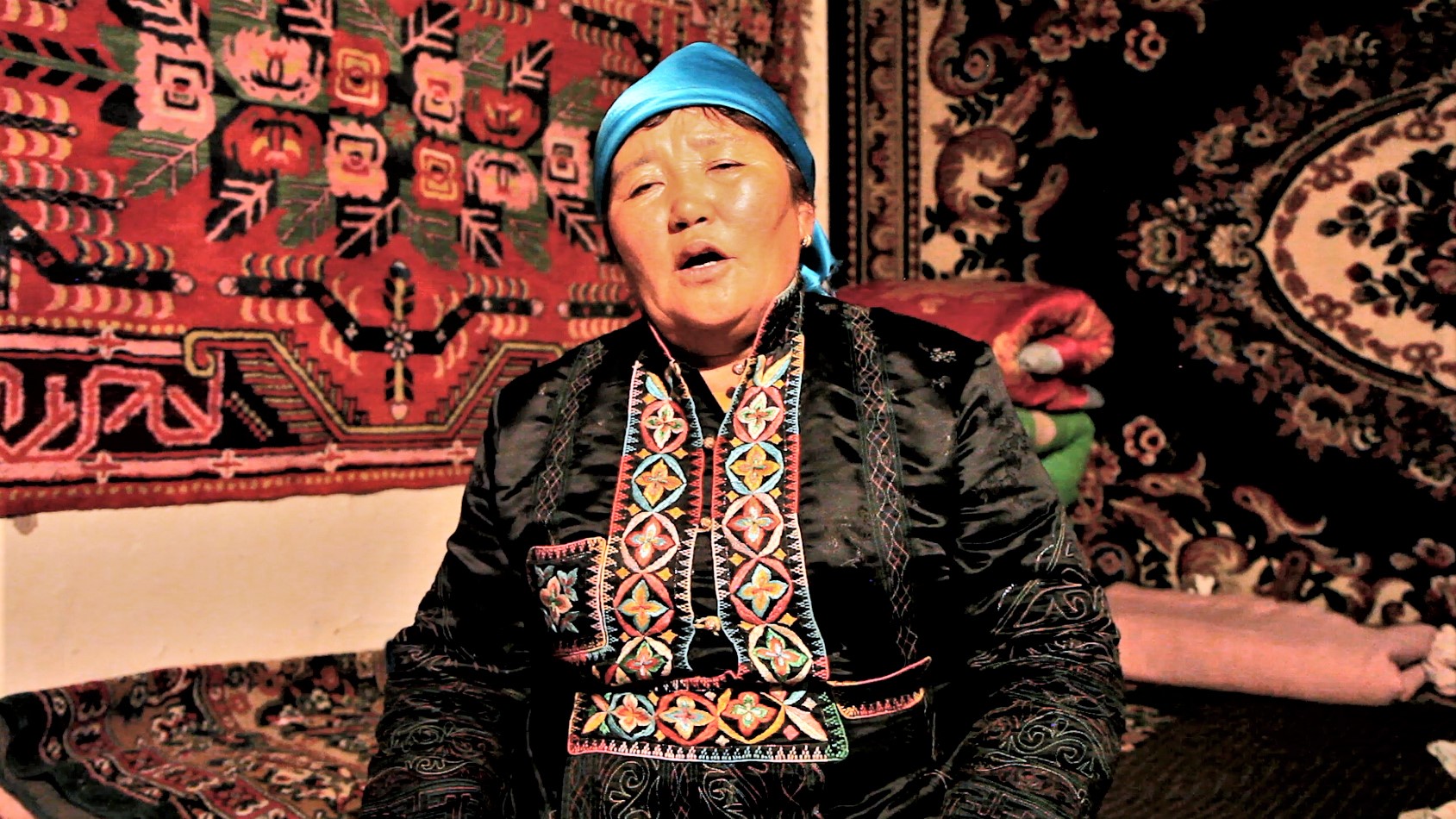COMPARATIVE RESEARCH PROJECT
Candidate: Chingis Azydov, MA
One of the most ancient musical genres uniting all Mongolian peoples living throughout the vast territory of Eurasia is the long song ut dun (Mong. urtyn duun). The genesis of the long song phenomenon is believed to have developed alongside the cult of the wolf in the ancient beliefs of Turk-Mongolian nomads. The wolf’s howling is thought to have been the prototype and the inspiration for the ut dun tradition.
Oirat-Kalmyks have been living in the European part of what is now [known as] Russia since the middle of 17th century. Having settled well away from the rest of the Mongolian world, Oirat-Kalmyks face great challenges preservation of their language, folklore, traditions and so on; the quintessence of their ethnic identity. Until the beginning of the 20th century, the Kalmyks maintained a nomadic lifestyle and their own worldview. One of the bulwarks of this worldview, along with the myths and legends and heroic epos, has been the long song tradition of ut dun. The emotional manner of performance, poetic motifs and means (epithet, cliché, comparison, etc.) has allowed the expression of the inner feelings of the person performing the long songs, whether it be the young woman recalling her mother and childhood: “I grew up on the back of beautiful dun pacer horse. I grew up on the chest of mother with a beautiful temper” (Tsebikov 1991: 19), or a Buddhist monk describing his travel to distant countries: “The land called Tibet is in a six months away. The obstacles and enemies that occur along the way, I entrust to the will of the Blessed Tsongkava” (Habunova 1998: 104).
After the Great October Revolution in 1917 and the civil war (1917-1923) in Russia, the power reverted to/was seized by Bolsheviks, who begin pursuing their policies and constructing a new state. This directly affected the Kalmyk people, who were forced by the communist government to undergo the process of transition from a nomadic to a settled way of life.
New realities of life required new heroes. Soon, new songs about a prosperous life within the collective farms, as well as those praising the merits of Vladimir Lenin and the local communists, came to replace the old long songs that reminded Oirat-Kalmyks about their nomadic past, ancient customs and their khans and heroes.
The Soviet period caused irreparable loss to Oirat-Kalmyks. Due to the Civil War and Red Terror that followed, the Oirat-Kalmyk people lost their most prominent representatives of nobility, intelligentsia and Buddhist culture. Up to 40% of the Kalmyk population died during the thirteen years of forced exile to Siberia that took place between 1943-1957. By the time Kalmyks returned to their homeland, other peoples such as Russians, Ukrainians and peoples of the North Caucasus populated Kalmykia. Thus, the population of the re-established Kalmyk autonomy has become more polyethnic than it had been prior to the deportation. This fact and the continuous Soviet assimilative policy (cancellation of school education in the Kalmyk language in 1962), led to the language shift, the Kalmyks being compelled to use Russian in almost all spheres of public domain. The reduction of Kalmyk language speakers had a negative effect on the folklore traditions, which began to rapidly vanish. Nowadays, the number of performers of ut dun, now mainly people over the age of 80, has dropped to a historic low of around 10-15 performers. Because of the complexity of performing techniques and the overall lack of language competence, ut dun as a genre is being marginalized by young professional performers. The performance techniques of ut dun have not yet been sufficiently studied – let alone taught – as a separate subject in the music schools of Kalmykia, as this genre was transmitted orally from one generation to another.
The research project, Socio-cultural changes and effects in the development of the Oirat-Kalmyk long song tradition “Ut dun” since the pre-Soviet time until today,aims to describe and analyse the evolution, role and present performance practices of the Kalmyk folk song genre ut dun in Kalmykia (Russia), taking into account parallel developments in Xinjiang, China and Western Mongolia.
The main goal of the research is the analysis of the social function this genre used to hold in the traditional Oirat-Kalmyk society, as well as the role it has had in today's modern society. It will consider both external and internal factors that have contributed to the endangerment of this particular genre in its original form and content observing the current dynamic of reintegration and fusion with other genres. The main question that arises here concerns the aesthetic, cultural and social value of ut dun for generations both present and future of the Oirat-Kalmyk people in Kalmykia.

Chingis Ayzdov is currently an employee at VLACH Commission and he is completing his PhD at the University of Jena (supervisor: Thede Kahl).
Bibliography
Basangova, Tamara G. (2007): "Ritual poetry of the Kalmyks (the system of genres, poetics)", Elista, Kalmyk book publishing house.
Borlykova, Bosha K. (2012): "Kalmyk musical terminology", Elista, "Dzhangar" Kalmyk publishing house.
Dordzhieva, Gilyana A. (2000): "Kalmyk long songs. Experience of structural-typological and historical-stylistic studies", dissertation abstract, Saint Petersburg.
Habunova, Evdokia E. (1988): "Kalmyk Wedding Ritual Poetry. Research and Materials", Elista, “Dzhangar” Kalmyk publishing house.
Maksimov, Konstantin N. (2004): "The tragedy of the people: repression in Kalmykia. 1918 – 1940 years", Moscow, Publishing house "Science".
Okonov, Boris B. (1989): "Songs of Homeland, Elista", Kalmyk book publishing house, 318 p.
Pankin, Arkady B. (2012): "Ethnocultural Connotation of the Content of Education in the Condition of Implementation of the Concept of stabilizing Modernization", in: The Bulletin of State University of Adygea. Series #3: Education and Psychology. Maikop, Ministry of Education and Science of the Russian Federation.
Tsebikov Leonid I. (1991): "One hundred Kalmyk folk songs", Elista, Kalmyk book publishing house, 128p.
Wang, Gao Chao (2012): "Traditional Oirat Music Culture", Elista, "Dzhangar" Kalmyk publishing house.